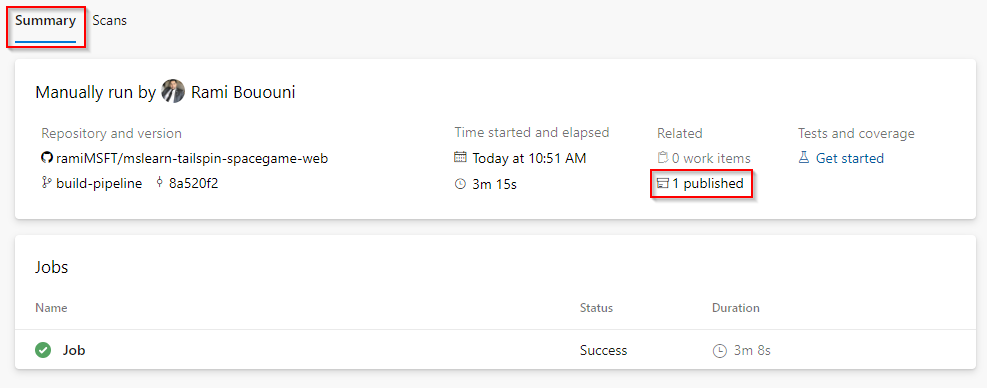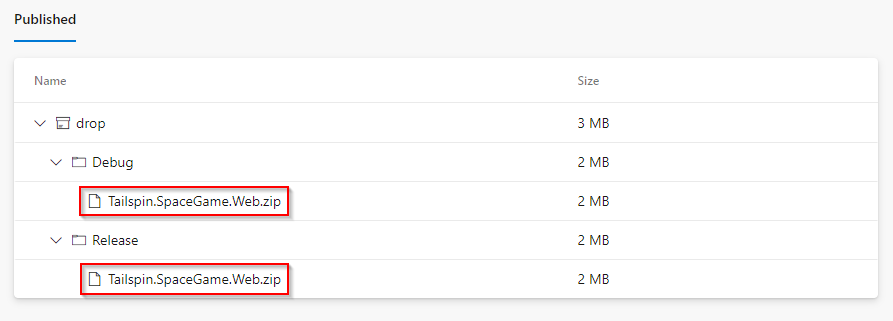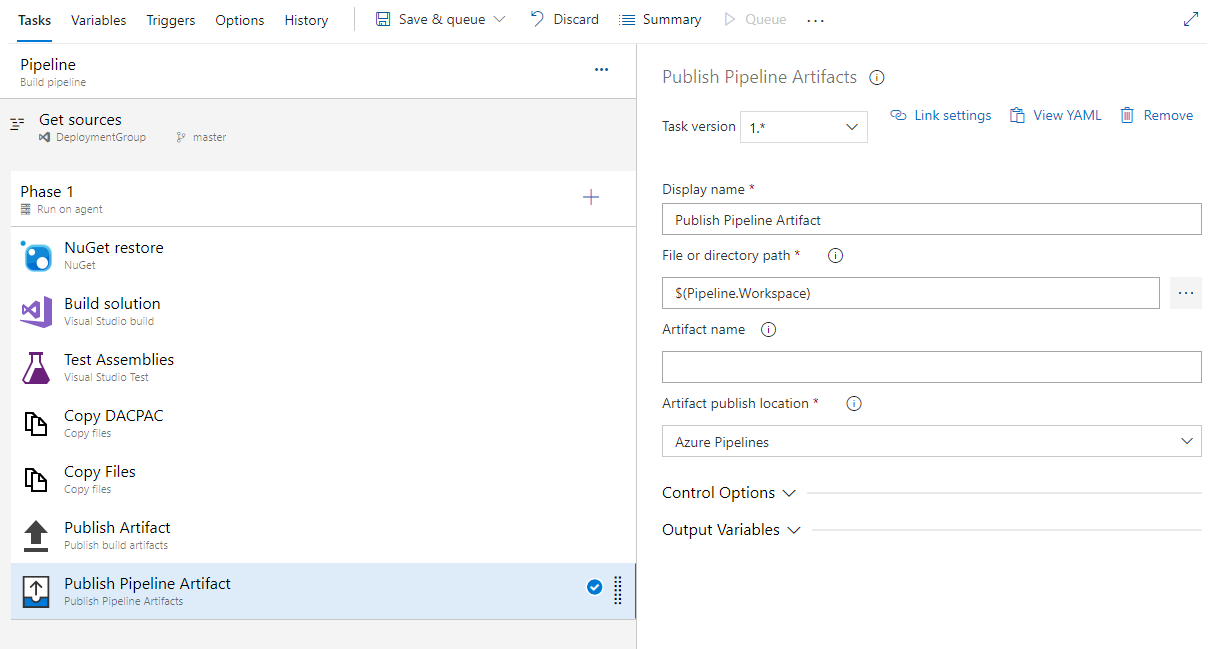Publish Pipeline Artifacts
Azure DevOps Services | Azure DevOps Server 2022 | Azure DevOps Server 2020
Azure Artifacts enable developers to store and manage their packages and control who they want to share it with. Pipeline Artifacts are generated after you build your application. The output can then be deployed or consumed by another job in your pipeline.
Publish Artifacts
Note
Publish pipeline artifacts is not supported in release pipelines. It is only supported in build pipelines, multi-stage pipelines, and yaml pipelines.
You can publish your Artifacts at any stage of your pipeline using YAML or the classic editor. You won't be billed for storing your Pipeline Artifacts or using Pipeline caching.
- task: PublishPipelineArtifact@1
inputs:
targetPath: '$(Pipeline.Workspace)'
publishLocation: 'pipeline'
artifact: 'drop'
targetPath: (Required) The path of the file or directory to publish. Can be absolute or relative to the default working directory. Can include variables, but wildcards are not supported. Default value: $(Pipeline.Workspace).
publishLocation: (Required). Artifacts publish location: choose whether to store the artifact in Azure Pipelines, or to copy it to a file share that must be accessible from the pipeline agent. Options: pipeline, filepath. Default value: pipeline.
artifact: (Optional) Name of the artifact to publish. If not set, defaults to a unique ID scoped to the job.
Publish Artifacts from the command line
If you want to manually publish your Artifact, run the following command in an elevated command prompt:
az pipelines runs artifact upload --artifact-name your_artifact_name --path your_path_to_publish --run-id '<artifact_run_id>'
View published Artifacts
When your pipeline run is completed, you can view or download your published Artifact as follows
Select your pipeline run, and then select the Summary tab.
Select the published Artifact in the related section.

Expand the drop folder and find your Artifact.

Download your pipeline Artifact and explore its content.
Related articles
Feedback
Coming soon: Throughout 2024 we will be phasing out GitHub Issues as the feedback mechanism for content and replacing it with a new feedback system. For more information see: https://aka.ms/ContentUserFeedback.
Submit and view feedback for
 and then select Add to add it to your pipeline.
and then select Add to add it to your pipeline.